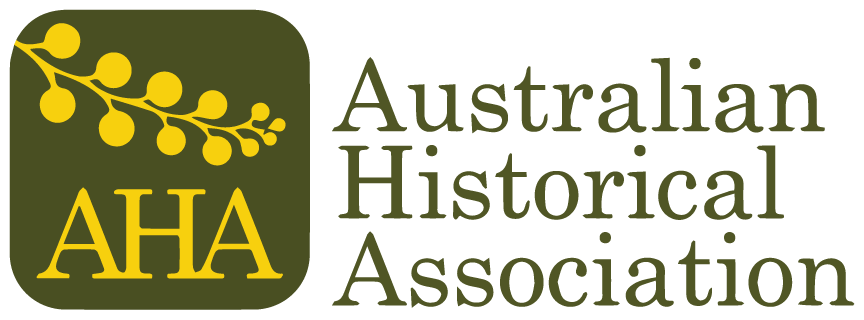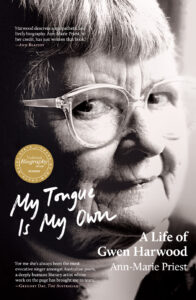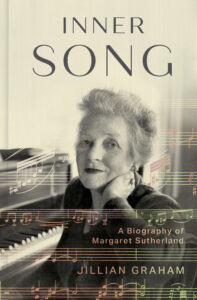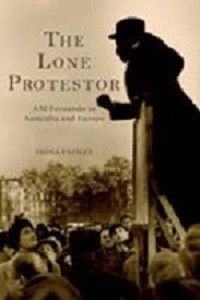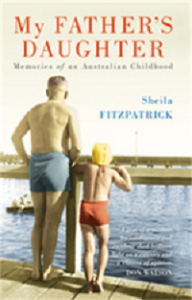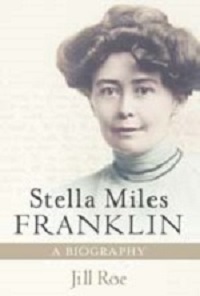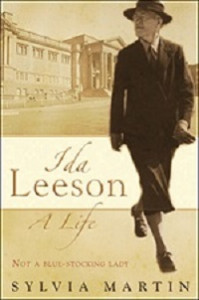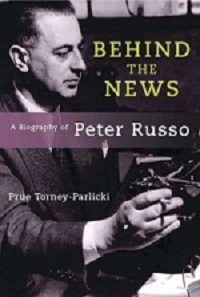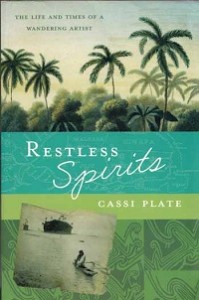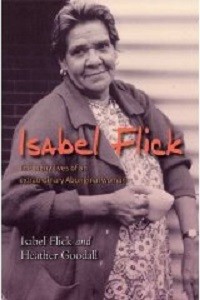2024 Magarey Medal Winner
Ann-Marie Priest, My Tongue Is My Own: A Life of Gwen Harwood (La Trobe University Press, 2022)
Ann-Marie Priest has written a consummate biography of renowned Australian poet Gwen Harwood. Too often biographers of Australian women have had to struggle with few sources but Priest had over 420 works, including 386 poems (and libretti), a massive correspondence, Harwood’s diaries, much commentary, and interviews with friends and family. Despite this, all of Priest’s craft was needed to make sense of Harwood because she was a mercurial ‘enigmatic figure of wigs and masks’, the ‘trickster poet’ who enjoyed reeling in biographical interest but sought to remain elusive. A self-described Tasmanian housewife and mother, with a marriage accompanied by love affairs with men and women, Harwood battled male cultural gatekeeping in postwar Australia by playfully adopting male nom de plumes and gaming editors. Written with skill and flair like Harwood’s own life, this is a definitive biography that truly gives voice to a woman whose tongue really was her own.
Commendation
Jillian Graham, Inner Song: A Biography of Margaret Sutherland (Miegunyah Press, 2023)
Jillian Graham has written a revealing, symphonic biography of Australian composer Margaret Sutherland, despite her subject’s reserve and the scarcity of personal sources. Sutherland had an unhappy marriage and suffered significant family trauma. Moreover, her innovative creative output was in spite of a condescending masculine musical culture. Graham succeeds in conveying Sutherland’s inner song through her deep understanding of both the musicology and the biographer’s craft. Her writing is vivid and the book beautifully produced.
Judges: Melanie Nolan (ANU), Leigh Straw (ND), Airlie Lawson (ASAL rep)
2022 Magarey Medal Winner
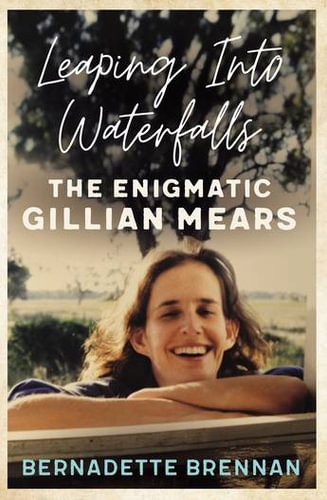 Bernadette Brennan, Leaping Into Waterfalls: The Enigmatic Gillian Mears (Allen & Unwin, 2021)
Bernadette Brennan, Leaping Into Waterfalls: The Enigmatic Gillian Mears (Allen & Unwin, 2021)
An elegant, sensitive and thoroughly engaging account of an important Australian writer. Gillian Mears is a compelling figure for biography. One of the most interesting and original writers of Australian fiction and essays during the late 20th and early 21st centuries, Mears was an obsessive self-archivist, an ardent correspondent, and a sometimes-wilful transgressor of her own and others’ privacy, in life and art. In this beautifully structured biography, Bernadette Brennan explores Mears in conjunction to her family, her lovers, her literary heroes, as well as to her horses, to place and to country – relationships Mears herself often placed at the centre of her literary works. Brennan navigates a sympathetic path through Mears’ highly complex relational life. One of the many interesting threads of Brennan’s biography considers a less often discussed side to such a career: how very difficult it is to make a living from literary writing in this country, even when one is awarded and lauded, as Mears eventually was. As a disabled woman, diagnosed with multiple sclerosis in her early 30s, Mears’ financial hardship was later compounded, and her creative life suffered deeply. Brennan uses the immense archival material that Mears left, and she works deftly with literary readings of Mears essays, short stories, poems, and novels to craft a wonderfully rich and layered portrait of her bright and ‘enigmatic’ subject.
Judges: Kylie Cardell (ASAL rep), Kate Douglas (ASAL), Samuel Furphy (ANU)
2020 Magarey Medal Winner
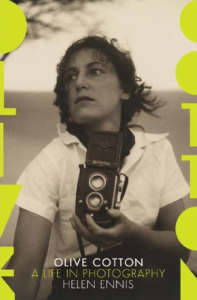
Helen Ennis, Olive Cotton. A Life in Photography
Helen Ennis’s, Olive Cotton: A Life in Photography, deftly navigates the dual strands of the genre of biography, creating a revelatory but noninvasive narrative. Olive Cotton was overshadowed in her early career as a photographer by a more flamboyant and charismatic husband, Max Dupain, and later cut off from the art world for decades living with her second husband in a tent, and later a run-down cottage, and raising two children in the Cowra region. But she kept taking photographs, and her work was rediscovered in a landmark exhibition in Sydney in 1985, followed by a major retrospective at the Art Gallery of New South Wales in 2000. Both husbands had louder voices than hers and left more records of themselves than she did. As a biographer, Helen Ennis, who knew Cotton from her days as curator of photography at the National Gallery of Australia, was faced with the challenge of a reticent, gentle subject and recalcitrant sources. But, with the aid of Cotton’s wonderful photographs illustrating the text, accompanied by illuminating detailed commentary, Ennis has triumphantly overcome these problems. The tone of her own text is calm and gentle, mirroring her subject, but the content is never bland or clichéd. The biography contains reflections on the problems of biography that are thoughtful and jargon-free, and key literary works such as Virginia Woolf’s A Room of One’s Own are engagingly used to highlight the constrains modernist women artists were working against. The photographer’s darkroom is evoked in the final chapters as the necessary ‘room of one’s own’. But Cotton, despite the difficulties and even privations of her middle years, was never dark. In a rare public comment on her work, she defined photography as ‘drawing with light’. Those wonderful light drawings are what remain with the reader of this fine biography. But it is biographer Ennis who has made us see and appreciate them.
Judges: Sheila Fitzpatrick (USyd, Chair), Demelza Hall (Federation, ASAL rep), Kate Fullagar (Macquarie).
2018 Magarey Medal Winner
 Alexis Wright, Tracker (Giramondo, 2017)
Alexis Wright, Tracker (Giramondo, 2017)
The committee felt that in a strong field Alexis Wright’s Tracker represented a clear and worthy winner of the Magarey medal. Tracker is a significant achievement, which provides a complex historical, social, and personal account of a remarkable Australian by innovatively supplementing the conventions of biography with indigenous knowledge and perspective. Tracker is a bespoke biography which crafts its form to fit with its individual subject, whilst also respecting more collective responses which are important to the indigenous life story. The author calls it ‘consensus storytelling’ and locates its conventions in the decision-making practices of indigenous community.
Tracker Tilmouth is an extraordinary Australian who worked to improve the well-being of indigenous Australians by tirelessly advocating, acting, and inspiring people and projects. He was an influential man who worked within complex networks of organization, business, government, politics and wider society so as to aid and develop an enduring indigenous contribution to Australian life. To tell such a story the form curates a range of different perspectives from a remarkably diverse set of people who were chosen by Tracker to contribute to his story. The book artfully organises these recollections along with interviews with Tracker himself. The overlapping, restorying, and the meshing together of different perspectives on indigenous experiences and histories, and the irreverent humour that recurs throughout make a powerful statement about a life expressed as purpose, imagination, action, resilience, and connection. In this way Wright is able to provide insight into a variety of individual and collective views of a remarkable Arrente man.
Tracker provides a diverse and complex appreciation of the challenges, labors, achievements and capacities of indigenous Australians. Wright is able to vacate that location of the biographer to create a more polyphonic narrative that makes a point about the importance of a sense of society to any understanding of a life. It is a book that might be read cover to cover or dipped into serendipitously for example. Tracker enables its subject to be understood in complex moments and key relationships in such a way as to preserve the rich and multifaceted details of a life of engagement from the generalising tendencies of more conventional biography. It is a book appropriate to its subject.
Highly Commended: Judith Brett, The Enigmatic Mr Deakin (Text Publishing, 2017)
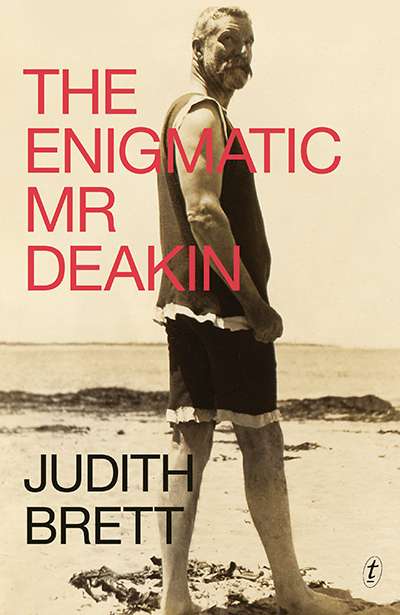 The Committee highly commended Judith Brett’s wonderful biography of Alfred Deakin. This significant work of scholarship directs much wanted attention to a period of Australian public life, which has been neglected in the obsession with the commemoration of war. The Enigmatic Mr Deakin takes an important national figure who still has much to teach a contemporary Australian public. Deakin demonstrated that minority government can be good government if it focuses on what needs to be accomplished rather than political contest. Brett’s story reminds us that many of the innovative reforms that institutionalized much vaunted national values and promoted an Australian social contract were the product of such a process. Brett’s subject draws on extensive documentary sources which are selected and summarized with scholarly judgment and writerly skill to craft a fascinating life story which brings a new understanding of Deakin’s private life together with his political challenges and some of the great public achievements of his time.
The Committee highly commended Judith Brett’s wonderful biography of Alfred Deakin. This significant work of scholarship directs much wanted attention to a period of Australian public life, which has been neglected in the obsession with the commemoration of war. The Enigmatic Mr Deakin takes an important national figure who still has much to teach a contemporary Australian public. Deakin demonstrated that minority government can be good government if it focuses on what needs to be accomplished rather than political contest. Brett’s story reminds us that many of the innovative reforms that institutionalized much vaunted national values and promoted an Australian social contract were the product of such a process. Brett’s subject draws on extensive documentary sources which are selected and summarized with scholarly judgment and writerly skill to craft a fascinating life story which brings a new understanding of Deakin’s private life together with his political challenges and some of the great public achievements of his time.
Judges: Professor Christopher Lee (Griffith, Chair), Professor Gillian Whitlock (UQ), Professor Fiona Paisley (Griffith)
2016 Magarey Medal Winner
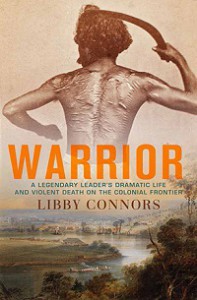 Libby Connors, Warrior: A Legendary Leader’s Dramatic Life and Violent Death on the Colonial Frontier (Allen and Unwin, 2015)
Libby Connors, Warrior: A Legendary Leader’s Dramatic Life and Violent Death on the Colonial Frontier (Allen and Unwin, 2015)
This impressive and imaginative work offers an account of the life and death of Aboriginal warrior, leader and lawman Dundalli, while using his life as the focal point for exploring in great detail frontier conflict in mid 19th century south-east Queensland.
Despite the lack of either visual or direct personal sources for Dundalli, Libby Connors succeeds in bringing to life not only the 19th century Aboriginal leader who was variously admired and feared by Aborigines and white settlers, but also all the players, both Indigenous and non-Indigenous amongst whom he lived, worked and fought. Working with a large number of disparate sources: newspaper commentary, coronial and court reports, missionary journals, letters, memoirs and travel writings from a range of white settlers, colonial officials, and British visitors, reports of conversations with Indigenous people at the time, and conversations with contemporary Indigenous informants, Connors manages to piece together not only the difficult and sometimes bloody history of the frontier in Queensland, but also the extremely complex internal politics and motivations that came into play both amongst the white settlers and the Indigenous groups that sought to resist the takeover of their land. She also offers careful and thoughtful critical reflections on her sources and particularly on the depiction of Dundalli and his community offered by white settlers and commentators. The result is a work of great subtlety which enlivens our understanding of Queensland’s colonial and Aboriginal past at the same time as it brilliantly reclaims the life of a significant historical figure.
Connors tells the story graphically and very well, bringing all of her characters to life and acknowledging and making use of the published work on this period without engaging in excessive historiographical analysis or discussion.
In the clarity with which she discusses the limitations of her sources and hence of the knowledge it is possible to have of her subject, and in its use of the figure of Dundalli as a central focus in its analysis of the Queensland frontier, this work represents another step in the development of biography as an innovative form of historical writing. Rarely in Australia has an author undertaken a biography necessarily relying on sparse sources with such aplomb. Warrior is a notable contribution to our understanding of the Indigenous experience in 19th century Australia.
Judges: Barbara Caine, Peter Spearritt, Bronwen Levy
2014 Magarey Medal Winner
Fiona Paisley, The Lone Protester: AM Fernando in Australia and Europe (Aboriginal Studies Press, 2012)
Fiona Paisley’s biography is a study of little known Aboriginal activist, A.M. Fernando, and his extraordinary acts of resistance in Australia and Europe in the first half of the twentieth century. This work is notable for its meticulous research, its grasp on and evocation of the national and international context, and of the politics of the archive. Paisley’s assured narrative reveals without pronouncing. This is an intelligent, nuanced and compelling biography set within an insightful analytical frame.
.
2012 Magarey Medal Winner
Sheila Fitzpatrick, My Father’s Daughter: Memories of an Australian Childhood (Melbourne University Press)
A powerful and surprisingly candid memoir of Sheila Fitzpatrick’s father, Brian Fitzpatrick, the controversial radical historian and civil liberties activist. … Fitzpatrick’s evocative narrative manages the difficult feat of appealing on several levels: as a memoir of post-war Australian childhood, as an intellectual biography and finally, as an historian’s reflection on memory and historical truth.
.
2010 Magarey Medal Winner
Jill Roe, Stella Miles Franklin: A Biography (Harper Collins)
Jill Roe’s Stella Miles Franklin: A Biography is a rich and comprehensive treatment of the cultural and social milieux of this signal literary figure. It traces in extraordinary detail her national and international career – at once “brilliant” and strangely muted – and her activist and writerly interventions across these fields. In the process, it stakes a powerful claim for the historian as biographer, providing a compelling cultural and social history of Australia from the 1880s to the 1950s, locating its subject firmly and evocatively in her time and place, from her childhood in Brindabella, through war-time in Macedonia to semi-retirement in the southern suburbs of Sydney.
Jill Roe’s handling of Stella Miles herself is compassionate and sympathetic in spirit, yet quietly measured and just. It provides a full scholarly history of Miles Franklin as a figure who was critical to the formation of the Australian literary field; but it also does something arguably more important. In its astonishing attention to detail, bespeaking the wealth of original research that underpins it, its immense scope in terms of world events and national preoccupations, it opens up its subject to new readers and thinkers, encouraging and enabling new work, further research on a hugely important national literary figure.
2008 Magarey Medal Winner
Sylvia Martin, Ida Leeson: A Life. Not a Blue-Stocking Lady (Allen & Unwin, 2006)
This is a beautifully written life of Ida Leeson, the first woman to be appointed to a senior Australian library position in 1932, as Mitchell Librarian. It was a controversial appointment, and easily marks the central narrative of the Leeson’s life, and yet it forms only one of many fascinating aspects of this biography.
Structured like a set of frames rather than a linear life, Sylvia Martin’s biography brings into relief the rich literary, cultural and intellectual life of the nation through the life of Ida Leeson, and her under-acknowledged role in shaping those traditions.
Leeson finds the missing log of Matthew Flinders in the London Shipping Lists, for example, and lobbies for the Angus & Robertson archives to be secured. Writers associated with the library as both staff and readers during her time include Christopher Brennan, Miles Franklin, Nancy Phelan, and Marjorie Barnard, and she was part of the anthroposophical community at Castlecrag started by the Burley-Griffins in the 1930s. During WWII she was part of an extraordinary intellectual coterie that Alfred Conlon brought together in the National Morale Committee, and after the war she left the Mitchell permanently to construct libraries in the South Pacific as part of their social development. Leeson’s life attests to the astonishing role of librarians – and bibliographies – in the creation of nations and their histories.
Martin’s comprehensive research sits lightly and easily in this biography of a woman who left very little textual evidence of her work and yet played such a central role in the provision of other people’s research. The work and dilemmas of the biographer are also unobtrusive and yet importantly part of this narrative, reflexively considering historiography and biographic conventions. Both assured and nuanced in negotiating Leeson’s strident reputation, mode of dress and address, and her longterm friendship with Florence Birth, Martin also untangles some of the tangible difficulties of writing biography in times when terms like ‘lesbian’ have different kinds of currency. Testimony to Martin’s extraordinary rendering of Leeson is a lasting impression of a woman who is gruff and scary, efficient and driven, affable and talkative, loyal and valiant.
This is a compelling and intellectually fascinating book, which models the very best of contemporary biographical writing.
2006 Magarey Medal Winner
Prue Torney-Parlicki, Behind the News: A Biography of Peter Russo (Perth, WA: University of Western Australia Press, 2005)
Behind the News by Prue Torney (formerly known as Prue Torney-Parlicki), published by the University of Western Australia Press, is a meticulously researched and engagingly written study of Peter Russo, journalist and commentator, linguist and Asian specialist.
As one of the most controversial media figures of twentieth-century Australia, Russo proved an ideal subject for very intriguing biographical study. To quote from the biography: ‘Urbane and charming, yet also haughty, acerbic and cynical, with more than a touch of malice, Russo was a gadfly, a provocateur’.
Fluent in eight languages and with an abiding interest in Asia, Russo interpreted events in Japan, Korea, Indo-China, Malaysia and Egypt in a confronting and unorthodox manner, during the most trenchant years of the ‘White Australia Policy’ and the Cold War. His expertise in this field, especially his knowledge of Japan, meant that he played an important, though unacknowledged role in Australian politics and foreign policy. The book succeeds admirably in bringing back into the spotlight a leading public intellectual whose contribution to building links between Australia and Asia and to making Australians more conscious of their Asian neighbours was clearly very influential.
Drawing on exhaustive archival research in Australia and Japan, Torney documents Russo’s life with a deft hand, integrating the complex backgrounds of world history, foreign affairs and the Australian media with impressive scholarship, while never losing sight of the main focus of her biography, Russo himself. Particularly significant is her engagement with Russo’s experience in Japan and his interpreting of Japan to an often hostile Australian audience. Although the chief emphasis of the biography is on Russo’s public career, Torney does not ignore the complicated private self, offering a nuanced and layered portrait of this complex, difficult and fascinating man.
As Richard Broinowski writes in the Foreword to Behind the News, we are doubly indebted to Dr Prue Torney for producing a highly readable and credible account of Peter Russo, his life, his motivations and his contributions to Australian understandings of Asia and how we fit into them. ‘Her investigations are especially valuable because coverage of world events in the Australian media is now timid, selective and lacking any kind of scholarship. There are no more Russos to enlighten the arid media scene.’
A fine example of a scholarly, archivally-based biography which is also an absorbing and compelling reading experience, Behind the News makes a significant contribution to Australian history, the history of Australian-Japan relations and media history.
Behind the News is the second of two important books on Australia’s relations with Asia by Prue Torney (1956–2006). In Somewhere in Asia: War, Journalism and Australia’s Neighbours 1941–75 (UNSW Press, 2000) she explored the role of war correspondents in shaping the attitudes of Australians to neighbouring countries in Asia. Prue Torney had an abiding interest in the history of journalism in Australia. She contributed an entry on war reporting to the Oxford Companion to Australian History (OUP, 1998), and her book chapters were included in several edited collections on the history of journalism. Her articles were published in such journals as Australian Historical Studies, Australian Journal of Politics and History, the Journal of Australian Studies, War and Society, and Overland. Prue Torney had a long association with the History Department at the University of Melbourne. She returned to study as a mature-aged student in the 1980s, and completed combined Honours in History and English. She was awarded the Gyles Turner Prize in Australian History in 1990, the Kathleen Fitzpatrick Exhibition in English and History (Combined Honours) in 1992 and the Brian Fitzpatrick Prize in History (Honours) in 1992. She went straight on to doctoral studies on the role of war correspondents in educating the Australian public about Asia, and this was the basis of her first monograph, Somewhere in Asia. She maintained a close association with the History Department, as a tutor, lecturer, research assistant and research associate. In 2005, she was appointed to a Research Fellowship in the History Department to work on her project on column writing in Australian newspapers.
Judges: Elizabeth Webby, Penny Russell, Mary Spongberg
2006 Magarey Medal Highly Commended
Cassi Plate, Restless Spirits (Sydney, NSW: Macmillan, 2005)
Cassi Plate’s Restless Spirits, published by Macmillan, is an intriguing, perceptive and always very readable biography of the author’s grandfather, German artist Adolf Gustav Plate. Derived from Plate’s doctoral thesis, Restless Spirits is the pilot work in an innovative partnership between the University of Sydney and Pan Macmillan to turn the thesis into a book. Reconstructing the life of her nomadic grandfather through treasures from the bottom of his old sea chest, Plate embarks on a journey of her own, travelling across Australia and the Pacific while trying to retrace Adolf’s steps and piece together the scattered fragments of his life. Written in an intimate and often whimsical tone, the book evinces an openness to reading a wide range of sources as the archive of her grandfather’s life and offers an original perspective on the relation between memory and biography.
The book is beautifully illustrated with photographs of the artist’s paintings and other memorabilia from the sea chest. Cassi Plate deftly weaves discussion of these images into her text, so enhancing the hybrid nature of her biography.
Judges: Penny Russell, Mary Spongberg, Elizabeth Webby
2005 Inaugural Magarey Medal Winner
Isabel Flick and Heather Goodall, Isabel Flick: The Many Lives of an Extraordinary Aboriginal Woman (Crows Nest, NSW: Allen & Unwin, 2004)
Isabel Flick: The Many Lives of an Extraordinary Aboriginal Woman, by Isabel Flick and Heather Goodall, and published by Allen & Unwin, is, as Linda Burney says in her Foreword, the story of an Australian hero. It is also an outstanding example of a collaboration between its subject, Isabel Flick, and her chosen interviewer, adviser and editor, Heather Goodall, in which it remains Isabel’s autobiography despite her death halfway through the process. Before she died, Isabel Flick asked Goodall and her family to complete her story.
The result is a multi-layered account of her ‘many lives’ which accurately reflects the circles of family, friends, communities and political organisations that Flick sustained and within which she worked. Isabel Flick: The Many Lives of an Extraordinary Aboriginal Woman does what a good biography or autobiography does: it tells the story of a life, and through that life it tells the story of a family, a community, a series of networks, and a nation.
Isabel Flick was, indeed, an extraordinary woman. She was born in Goondiwindi in 1928, and was brought up on the banks of the Barwon River outside Collarenebri, in the Aboriginal settlement called the Old Camp. The story she tells is of her struggle to be educated – of not being allowed to attend the white school in Collarenebri, of having to leave her family and community to get three years schooling at Toomelah Mission – and then, when she has children of her own, of working as a cleaner, first in Collarenebri and then in Sydney, to make sure they get a good education. And through all this, she traces her gradual politicisation, as she discovers her lack of rights and works out her strategies to deal with this lack – speaking up, negotiation, and putting past injuries behind her. One extraordinary part of this story is how she became an advocate for the rights of Aboriginal children when she worked as a cleaner at the Collarenebri school, speaking out whenever she saw them treated badly, and becoming a valued adviser to the Parents and Citizens Association of the school. Gradually the shy young woman who trembled with fear when she first spoke to a policeman became the centre of groups who demanded better health services and housing, who refused to sit in the roped-off section at the local pictures, who organised fundraising, who began to become involved in welfare organisations such as the Far West Scheme, and learned to speak up for what her people wanted to politicians, police, welfare and lawyers. As she told Heather Goodall, “I started to get gamer and gamer.” When Goodall met her in Sydney in 1974 she found an “astute and shrewd” community activist who was also an “hilarious” storyteller.
When Isabel Flick returned to Collarenebri in 1978 she remained at the centre of local and national networks concerned with housing, education, deaths in custody, land rights and women’s welfare. She was awarded the Order of Australia in 1986.
When Isabel Flick asked Heather Goodall to help record and edit her life story, they had been friends for many years. They had met in 1974 when Heather was a graduate student recording Aboriginal oral histories. Since then she had become a prize-winning scholar of Aboriginal history and was an Associate Professor of History at the University of Technology, Sydney. Beginning in 1997, they recorded Isabel’s memories, visited important sites, and had many group discussions with family and friends. Their recording sessions had only reached 1972 when Isabel died of lung cancer in February 2002. The book therefore is mainly in Isabel’s voice in the first five chapters and has more of Heather Goodall’s voice in the final seven chapters. But as Goodall says in her introduction, “it has been important for me that it remains Isabel’s book, with an autobiography at its core which explores the questions she wanted to ask about her life.” She has succeeded admirably in this, drawing on Isabel’s carefully saved papers, on conversations with Heather over the years and the vivid and eloquent memories of those who knew her well, to make a seamless book that remains, very much, Isabel’s.
The book is beautifully produced by Allen & Unwin, with good quality paper and an attractive font. The narrative flows smoothly through Isabel’s words, Goodall’s contextual links (marked by italics) and the interspersed narratives of others (marked by a line at the side). Sustaining the differences of tone and point of view in this syncretic melding of voices is one of the book’s most remarkable achievements, as events are recounted by more than one participant and the angle of view shifts. The multi-planed portrait of Flick that emerges is a testimony to the worth of such embedded, multi-voiced biography, drawing on the collective model of ethnography and yet sustaining Flick’s own account of herself and her life as its centre. There are charming and helpful maps, a family tree and numerous photographs drawing on family albums and other archival sources.
Heather Goodall is currently an Associate Professor in Social Inquiry and a member of the Centre for Trans/forming Cultures at the University of Technology, Sydney. She has worked in collaboration with Aboriginal people on many projects since the early 1970s. Her book, Invasion to Embassy: Land in Aboriginal Politics in New South Wales, was awarded the NSW Premier’s Prize for Australian History in 1997.
As Ann Curthoys says in her tribute at the front of Isabel Flick: The Many Lives of an Extraordinary Aboriginal Woman, this is a wonderful book that made her laugh, cry, and think afresh. This is what the best life stories can do, and that is why this book has been awarded the inaugural Magarey Medal for Biography.
Judges: Desley Deacon, Barbara Milech, Nicole Moore
